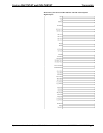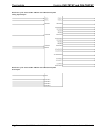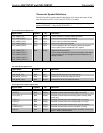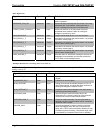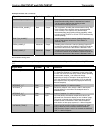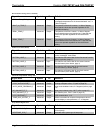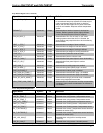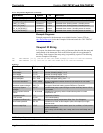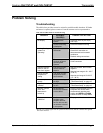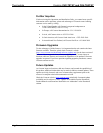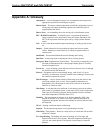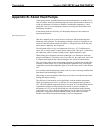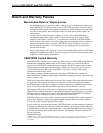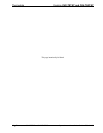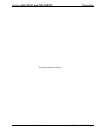
Thermostats Crestron CHV-TSTAT and CHV-THSTAT
Appendix B: About Heat Pumps
A heat pump extracts available heat from one area and transfers it to another. Even
cold air contains some heat, and heat pumps can extract heat from the outside air on
a cold day and transfer it indoors to maintain a comfortable temperature. A heat
pump also works in reverse during the summer, extracting heat from indoors and
transferring it outdoors.
In the heating mode, the efficiency of a heat pump decreases as the outdoor air
temperature decreases.
Heat Pump Operation
Heat flows naturally from a warm area to a cooler area, and the heat pump takes
advantage of this principle. The heat pump essentially consists of a compressor, an
inside coil and fan, and an outside coil and fan. A refrigerant flows inside the coils,
under pressure applied by the compressor.
The refrigerant boils at a very low temperature (as low as -15° F) and becomes a
vapor, just as water becomes a vapor (steam) when boiled. This vapor is sucked into
the compressor where it becomes a high pressure, high temperature vapor.
When heating, the refrigerant is then forced through a coil within part of the heat
pump located indoors. A fan blows cool air over the coil, the vapor cools, turns back
to a liquid, releasing heat that is blown through a duct system to heat the house.
The cycle begins again as the cooled liquid refrigerant is pumped back outside after
releasing it’s heat. On the way, it passes through an expansion valve, lowering the
refrigerant's pressure and temperature again so it can boil more easily in the outdoor
coil.
In its cooling mode the heat pump system works in reverse, extracting available heat
from indoors and transferring it outside.
Heat pumps are most economical when they can be used year-round for both winter
heating and summer cooling.
The efficiency of a heat pump varies significantly with the outdoor temperature.
While a heat pump may be twice as efficient as a conventional heating system at
50°F. When the outdoor temperature drops to less than 30°F, the heat pump must be
supplemented with an auxiliary heating system such as electric resistance. At
temperatures of 15°F or less the heat pump may shut off and the backup heating
system takes over. This is the heat pump balance point. In a dual-fuel system, the
heat pump is supplemented with a standard furnace, which takes over when it
becomes more efficient than the heat pump at very low temperatures.
40 • Thermostats: CHV-TSTAT and CHV-THSTAT Operations and Installation Guide – DOC. 8163A



